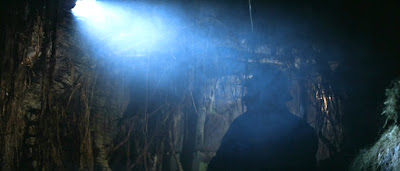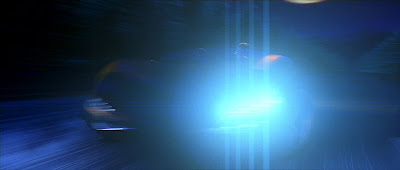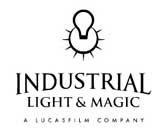





Coming up next time: foregrounds and backgrounds in "Raiders."
A blogtacular blog filled with words, images, and whipped cream on top. Written by Todd Vaziri.






 By the time of "Raiders of the Lost Ark," (1981) Slocombe was a veteran cinematographer, with a rich and varied filmmography in both the United States and in England, and both in black and white and color. He was nominated for three Academy Awards (including "Raiders"), and for ten British Academy Awards (winning three, for "The Servant" in black and white, and for "The Great Gatsby" and "Julia" in color).
By the time of "Raiders of the Lost Ark," (1981) Slocombe was a veteran cinematographer, with a rich and varied filmmography in both the United States and in England, and both in black and white and color. He was nominated for three Academy Awards (including "Raiders"), and for ten British Academy Awards (winning three, for "The Servant" in black and white, and for "The Great Gatsby" and "Julia" in color).











 I love filmmakers who don't feel the need to sink their film to the lowest common denominator; filmmakers who, even within the context of a blockbuster-type film, give their audience a bit of credit for their intelligence. These writers and directors accept the fact that they are working within a framework of expectations - not simply the expectations of the traditional Hollywood narrative structure, but genre-specific elements for which audiences have become accustomed.
I love filmmakers who don't feel the need to sink their film to the lowest common denominator; filmmakers who, even within the context of a blockbuster-type film, give their audience a bit of credit for their intelligence. These writers and directors accept the fact that they are working within a framework of expectations - not simply the expectations of the traditional Hollywood narrative structure, but genre-specific elements for which audiences have become accustomed.Dryden: If M was so sure I was bent, she'd have sent a double-oh. Benefits of being section chief. I'd know if anyone had been promoted to double-oh status, wouldn't I? Your file shows no kills, and it takes...
James Bond: Two. [cuts to Bond fighting Dryden's contact]
Dryden: Shame. We barely got to know each other. [Dryden pulls the trigger, but no bullet is fired]
Bond: I know where you keep your gun. I suppose that's something.
Dryden: True. How did he die?
James Bond: Your contact? Not well.
Dryden: Made you feel it, did he? Well, you needn't worry. The second is... [Bond shoots Dryden]
James Bond: Yes... considerably.
 Firstly, admire the incredible efficiency of this dialogue. There are so few words, and yet a complicated story is being told on several levels, and nearly every line advances the story and gives us new information about these characters. Both characters understand what's going on-- these fellas are smart. Director Campbell and writers Neal Purvis, Robert Wade and Paul Haggis are assuming that the audience is smart enough to realize that these characters are smart. They both know what each other is scheming. Bond is finishing Dryden's sentences. Dryden realizes Bond is there to kill him. Bond knows that Dryden knows that Bond is there to kill him (why else would he have surreptitiously disarmed Dryden?).
Firstly, admire the incredible efficiency of this dialogue. There are so few words, and yet a complicated story is being told on several levels, and nearly every line advances the story and gives us new information about these characters. Both characters understand what's going on-- these fellas are smart. Director Campbell and writers Neal Purvis, Robert Wade and Paul Haggis are assuming that the audience is smart enough to realize that these characters are smart. They both know what each other is scheming. Bond is finishing Dryden's sentences. Dryden realizes Bond is there to kill him. Bond knows that Dryden knows that Bond is there to kill him (why else would he have surreptitiously disarmed Dryden?). As an aside, notice the ultra-fast flash frames and whip pan that occurs as Bond ultimately shoots Dryden. A few frames of a family photo on Dryden's desk appear for a split second, almost subconsciously giving the audience a sense of Dryden's humanity, just as he's being shot dead. Once again, this is a remarkable feat for a Bond film; most Bond films are quick to paint their villains as one-note, two-dimensional cutouts.
As an aside, notice the ultra-fast flash frames and whip pan that occurs as Bond ultimately shoots Dryden. A few frames of a family photo on Dryden's desk appear for a split second, almost subconsciously giving the audience a sense of Dryden's humanity, just as he's being shot dead. Once again, this is a remarkable feat for a Bond film; most Bond films are quick to paint their villains as one-note, two-dimensional cutouts. Davian (Philip Seymour Hoffman), just as we saw in the amazing and disorientating prologue to the film, has a gun to Julia's head (Michelle Monaghan). Agent Hunt (Tom Cruise) is doing all he can to convince Davian not to pull the trigger, while tied to a chair across from them. At a certain point, he realizes that Davian cannot be won over. Hunt's tone immediately changes from frenetic and panicked into an almost calm, solemness, as if he is resigned that her fate has already been sealed. "No," he whispers. "No." Davian finishes his countdown, "Ten," and pulls the trigger.
Davian (Philip Seymour Hoffman), just as we saw in the amazing and disorientating prologue to the film, has a gun to Julia's head (Michelle Monaghan). Agent Hunt (Tom Cruise) is doing all he can to convince Davian not to pull the trigger, while tied to a chair across from them. At a certain point, he realizes that Davian cannot be won over. Hunt's tone immediately changes from frenetic and panicked into an almost calm, solemness, as if he is resigned that her fate has already been sealed. "No," he whispers. "No." Davian finishes his countdown, "Ten," and pulls the trigger. The camera lingers on Hunt's face of disbelief after Davian pulls the trigger. He's thinking, 'why is this happening? I just retrieved the Rabbit's Foot for Davian... why was he asking me where it is?' But without a word, he simply stares off. Behind him, Davian retreats to another room, talking with a mysterious person. The camera remains on Hunt, but we see the men in the background and we hear whispers. The mystery man enters the room. We cut to Hunt's near-POV, a closeup of his dead 'wife.' Then, Agent Musgrave (Billy Crudup) interrupts his gaze - for a moment, he's out of focus (since we were focused on Hunt's wife), but he slowly becomes sharp, and we realize that Musgrave has been working with Davian the whole time. He stares at us, we're staring at him... Hunt says nothing, but we're all thinking, "How could this be? How could this be?!"
The camera lingers on Hunt's face of disbelief after Davian pulls the trigger. He's thinking, 'why is this happening? I just retrieved the Rabbit's Foot for Davian... why was he asking me where it is?' But without a word, he simply stares off. Behind him, Davian retreats to another room, talking with a mysterious person. The camera remains on Hunt, but we see the men in the background and we hear whispers. The mystery man enters the room. We cut to Hunt's near-POV, a closeup of his dead 'wife.' Then, Agent Musgrave (Billy Crudup) interrupts his gaze - for a moment, he's out of focus (since we were focused on Hunt's wife), but he slowly becomes sharp, and we realize that Musgrave has been working with Davian the whole time. He stares at us, we're staring at him... Hunt says nothing, but we're all thinking, "How could this be? How could this be?!" And, if the reader may indulge me, watch how carefully this scene is crafted. Director Abrams doesn't just cut to Musgrave sitting down, quickly rack focusing on him, and have him say his line. This is a big moment in the movie, and the timing needs to be just right to convey the magnitude of this moment-- the reveal of the big betrayal.
And, if the reader may indulge me, watch how carefully this scene is crafted. Director Abrams doesn't just cut to Musgrave sitting down, quickly rack focusing on him, and have him say his line. This is a big moment in the movie, and the timing needs to be just right to convey the magnitude of this moment-- the reveal of the big betrayal. What happened here? The camera crossed the 180 degree line. To establish a sense of orientation and understanding of a scene, particularly a scene with two characters talking to each other, the camera needs to stay on one side of the imaginary line that is created between the two characters. The camera, even within shot-reverse-shot sequences, needs to stay consistently on a single side, so that the scene is grounded for the viewer. The result: the audience is constantly oriented and understands the action.
What happened here? The camera crossed the 180 degree line. To establish a sense of orientation and understanding of a scene, particularly a scene with two characters talking to each other, the camera needs to stay on one side of the imaginary line that is created between the two characters. The camera, even within shot-reverse-shot sequences, needs to stay consistently on a single side, so that the scene is grounded for the viewer. The result: the audience is constantly oriented and understands the action. If the camera moves to the other side of that line, especially in a cut, the audience is immediately disoriented. "Our hero has just spent the entire scene talking to a character to the left... and now our hero is on the right? Wait, what happened?" This can be used for dramatic effect (for example, Ang Lee's "Hulk" used this device often, frequently cutting to cameras on either side of the 180 degree line, to create a constant sense of uneasiness), but in traditional Hollywood narrative filmmaking, this practice is frowned upon.
If the camera moves to the other side of that line, especially in a cut, the audience is immediately disoriented. "Our hero has just spent the entire scene talking to a character to the left... and now our hero is on the right? Wait, what happened?" This can be used for dramatic effect (for example, Ang Lee's "Hulk" used this device often, frequently cutting to cameras on either side of the 180 degree line, to create a constant sense of uneasiness), but in traditional Hollywood narrative filmmaking, this practice is frowned upon. The latest trailer for "Speed Racer" is now in theaters (links to the HD version and international trailers below). Here are some completely random frames from the trailer, chosen by the Randomizer 2000(tm), now featuring ArbitraryBoost(tm).
The latest trailer for "Speed Racer" is now in theaters (links to the HD version and international trailers below). Here are some completely random frames from the trailer, chosen by the Randomizer 2000(tm), now featuring ArbitraryBoost(tm).








 Before you read the following transcript, remember this: George W. Bush received a bachelor's Degree from Yale University, got a Masters from Harvard University in business, and was the Chairman and CEO of the oil company, Arbusto Oil. Oh, and he's currently the President of the United States, a nation which is going through a severe economic downturn.
Before you read the following transcript, remember this: George W. Bush received a bachelor's Degree from Yale University, got a Masters from Harvard University in business, and was the Chairman and CEO of the oil company, Arbusto Oil. Oh, and he's currently the President of the United States, a nation which is going through a severe economic downturn. THE PRESIDENT: That's interesting. I hadn't heard that.
THE PRESIDENT: That's interesting. I hadn't heard that. In addition, this is a brilliant illustration of how a person who frequently and casually lies gets caught in a lie by the telling the truth only moments before. Examine these two statements:
In addition, this is a brilliant illustration of how a person who frequently and casually lies gets caught in a lie by the telling the truth only moments before. Examine these two statements: This is a follow-up to our continuing series, "Predicting the VFX Oscar Part 1, Part 2 and Part 3 and Part 4."
This is a follow-up to our continuing series, "Predicting the VFX Oscar Part 1, Part 2 and Part 3 and Part 4." As you may remember from the previous articles in this series, we determined that critical acclaim (as indicated by the Tomatometer rating) was a fairly good predictor of the winner of the visual effects Academy Award.
As you may remember from the previous articles in this series, we determined that critical acclaim (as indicated by the Tomatometer rating) was a fairly good predictor of the winner of the visual effects Academy Award.
 Theory 1: The Academy is biased against ILM. This myth, still repeated among some visual effects fans and professionals alike, proclaims that old Hollywood is still fuming at George Lucas, founder of ILM, for his departure from Hollywood, and his hoarding of "Star Wars" riches. The theory also says that Hollywood is tired of ILM 'bullying' the effects community, and after years and years of success, needed to be brought down a notch (which is what caused a 12 year 'drought' of Academy Award wins for ILM). Therefore, Academy voters shunned the ILM productions, "Transformers" and "Pirates 3" and voted for the non-ILM production, "Compass."
Theory 1: The Academy is biased against ILM. This myth, still repeated among some visual effects fans and professionals alike, proclaims that old Hollywood is still fuming at George Lucas, founder of ILM, for his departure from Hollywood, and his hoarding of "Star Wars" riches. The theory also says that Hollywood is tired of ILM 'bullying' the effects community, and after years and years of success, needed to be brought down a notch (which is what caused a 12 year 'drought' of Academy Award wins for ILM). Therefore, Academy voters shunned the ILM productions, "Transformers" and "Pirates 3" and voted for the non-ILM production, "Compass." Theory 2: The vote was split between "Pirates 3" and "Transformers," giving "Compass" the win. This theory postulates that the majority of Academy voters actually wished that either "Pirates 3" or "Transformers" take home the Oscar, giving a plurality to "Compass."
Theory 2: The vote was split between "Pirates 3" and "Transformers," giving "Compass" the win. This theory postulates that the majority of Academy voters actually wished that either "Pirates 3" or "Transformers" take home the Oscar, giving a plurality to "Compass." Theory 3: "Compass" is the best family-friendly choice. "Compass," on paper, is the most family friendly of the three nominees, starring cute child actors, the handsome Daniel Craig, the beautiful Nicole Kidman, and-- gasp! -- cute, cuddly, talking animals. In fact, one cannot forget a similar upset from 1995, when "Babe," the G-rated family-friendly film defeated the overwhelming odds-on favorite, "Apollo 13." What did "Babe" have that "Apollo 13" didn't have? Cute, cuddly, talking animals.
Theory 3: "Compass" is the best family-friendly choice. "Compass," on paper, is the most family friendly of the three nominees, starring cute child actors, the handsome Daniel Craig, the beautiful Nicole Kidman, and-- gasp! -- cute, cuddly, talking animals. In fact, one cannot forget a similar upset from 1995, when "Babe," the G-rated family-friendly film defeated the overwhelming odds-on favorite, "Apollo 13." What did "Babe" have that "Apollo 13" didn't have? Cute, cuddly, talking animals. Theory 4: The Academy doesn't want to reward Michael Bay. The poster child for 'all that is wrong in today's cinema' is Mr. Bay, according to the Hollywood establishment, and the theory states that the Hollywood establishment would go out of its way to avoid rewarding Bay by not voting for the film that bears his name.
Theory 4: The Academy doesn't want to reward Michael Bay. The poster child for 'all that is wrong in today's cinema' is Mr. Bay, according to the Hollywood establishment, and the theory states that the Hollywood establishment would go out of its way to avoid rewarding Bay by not voting for the film that bears his name.